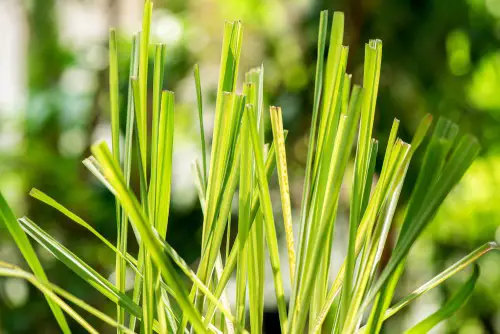Just about everything you grow in your garden can benefit from having a couple of “friends” planted nearby – and that includes lemongrass.
Lemongrass is a sweet, citrusy, and even sometimes spicy plant commonly used in Asian cuisines but also brewed up in tea as well. It grows well with a lot of sunshine and a lot of heat, but it grows even better when you plant the top 10 lemongrass companion plants we highlight below close by.
Some of the best companion plants for lemongrass include basil, mint, and cilantro, as their natural pest-repelling properties can help protect your lemongrass from insects and other garden pests.
In the rest of this detailed guide we highlight our favorite lemongrass companion plants and breakdown why you’ll want to make sure they are always a part of your garden.
Top 10 Lemongrass Companion Plants
Other similar posts:
1. Basil

Basil is one of the smartest companion plants you can snuggle up next to your lemongrass crop.
Sharing a lot of commonalities with lemongrass (at least as far as ideal growing conditions are concerned), these two plants really thrive off of one another. Basil helps to protect lemongrass from past and insect infestations, and lemongrass helps to protect basil from microbial and bacterial attacks.
Knowing that these plants aren’t going to compete too hard for shared resources is another big benefit. You can grow them closer together without wearing out your soil, and without stressing your basil or lemongrass plants at the same time.
2. Cilantro
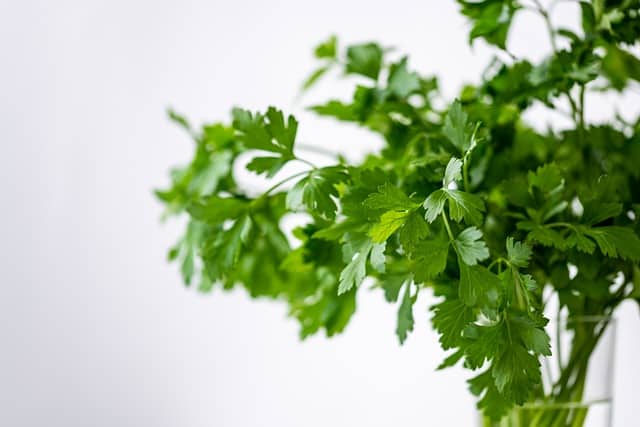
One of the most popular herbs in cooking, cilantro not only is a perfect companion plant in the garden but it also bears quite well with lemongrass when you are cooking, too.
Cilantro thrives in well drained soil, in conditions that have a lot of sunlight and a lot of warm weather, and won’t compete whole bunch with lemongrass for the nutrients in the soil they’ve been grown in.
It definitely doesn’t hurt that cilantro will push back against insect infestations that would otherwise eat your lemongrass from top to bottom, but also help to repel against rabbits and other animals that might like to make your lemongrass lunch.
3. Echinacea
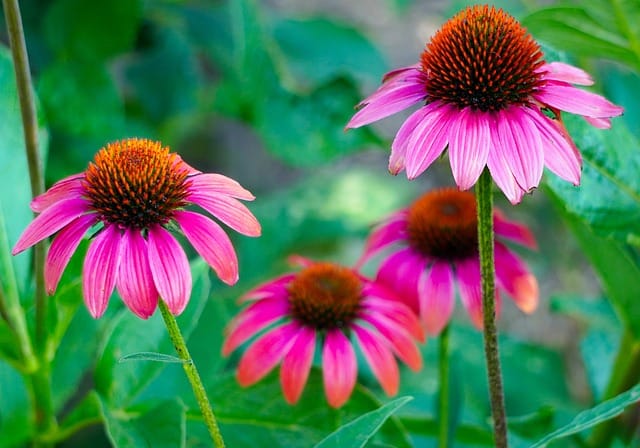
Echinacea has a whole host of medicinal benefits and has been used as a natural health remedy for literally hundreds (if not thousands) of years. It’s not at all uncommon to find Echinacea mixed in with lemongrass in hot beverages, helping you to get over everything from the common cold to a stuffy nose.
Echinacea works well as a companion plant for a couple of different reasons, not the least of which is because it attracts pollinators with its purple flowers in the mid to late summer season.
That late pollination can help to support the growing cycle of your lemongrass. But it’s also going to pull pollinators that can help the late growing cycles of any other plants you’re expecting to harvest towards the middle of fall.
4. Ginger

Ginger is a best friend to your lemongrass thanks to its ability to push back against insect invasions, pest infestations, and a whole host of bacterial infections that could kill your lemongrass crop.
One of the coolest things about ginger as a companion is that it is going to push deeper into the soil than your lemongrass will, consuming different resources along the way. This means they won’t be competing for nutrients in the same soil – even though they both love a bit of heat and a bit of humidity.
Lemongrass helps ginger to thrive by providing a bit of coverage and protection from extremely harsh sunlight conditions, too. It’s a very mutually beneficial kind of relationship.
5. Hops
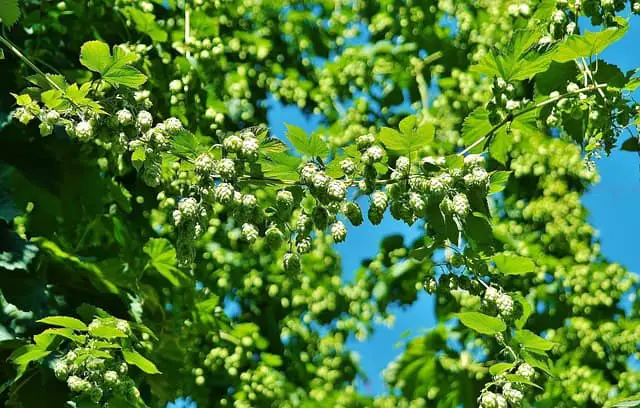
If you are thinking about growing hops in your garden with lemongrass you’ll want to make sure that the hops are relatively close to those plants, but not necessarily right on top of them.
Hops (once they’ve had a chance to really stabilize) are going to form a decently solid structure for your lemongrass to kind of grow into as those plants grow and mature, too.
On top of all of that, hops work to attract beneficial pollinators and insects that will keep your lemongrass free of infestation and disease. They’ll also work to repel (naturally and passively) bugs like beetles that could do a number on your younger lemongrass harvest.
6. Limes
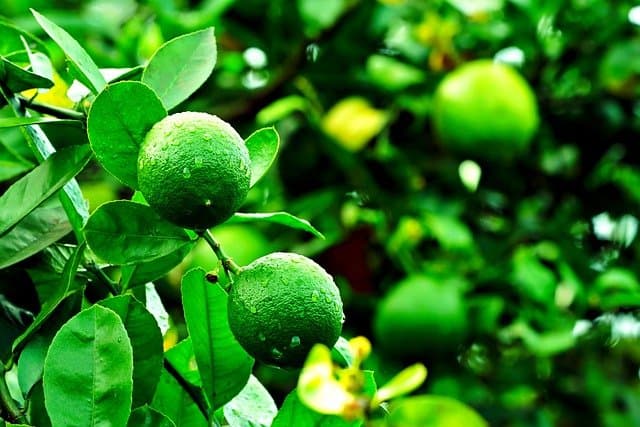
Smaller, shallow rooted plants (like lemongrass) do really well – we are talking REALLY well – when grown near lime trees.
The same kind of conditions that help limes to thrive (heat, sunshine, and well draining soil) also means your lemongrass will do quite well, while at the same time getting just a little bit of diffused sunlight and protection from extremely harsh UV rays thanks to those lime tree branches, too.
On top of all of that, the pollinators there attracted to the citrusy flowers of a lime tree are going to be super happy to find pockets of lemongrass for them to flit into as well. You’ll be building a nice little citrus ecosystem when you combine limes and lemongrass together!
7. Marigolds

Unlike a lot of other companion plants for lemongrass that repel insect invaders, marigolds actually act as a homing beacon and major attractor – almost a magnet, really – for the kinds of bugs that are going to benefit your lemongrass crops.
Marigolds with their bold, beautiful colors and sweet pollen are going to lure in all different kinds of pollinators (not just honeybees, either) that will do wonders for your lemongrass.
Don’t be surprised if you find your lemongrass to be sweeter, more flavorful, and even taste fresher after you’ve planted some marigolds around the perimeter.
8. Mint

The strong (sometimes almost overwhelming) aroma of mint helps to drive off major insect invaders like white cabbage moths (sometimes called cabbage loopers) as well as other bugs and pests that will eat every bit of lemongrass you’ve tried to grow.
And they’ll do it faster than you ever would have thought possible, too. You do have to be a little bit careful about how you use mint as a companion plant in your garden, though.
It doesn’t take a whole lot for mint to (quite literally) take over an entire garden space, choking out other crops – not necessarily your lemongrass, but a lot of the other vegetables and herbs you’ve been growing – quicker than you’d think.
Be smart and strategic about how you use mint as a companion in your garden and you’ll be happy with the results.
9. Sweet Peppers
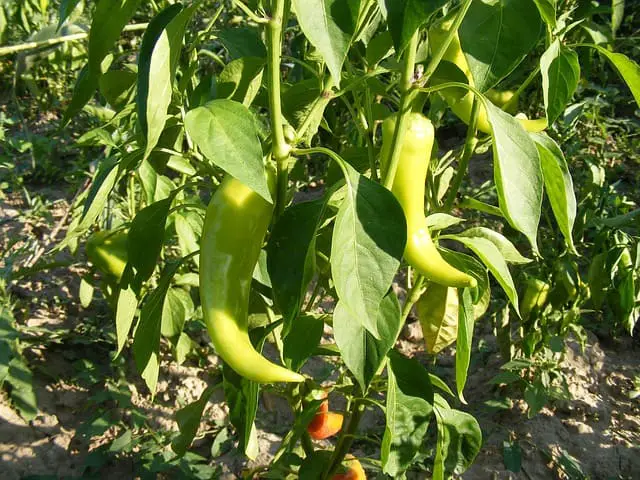
The sweet smell of lemongrass will help to bring pollinators closer to your sweet peppers, making sure that they get plenty of love and attention as well.
This is going to help boost the flavor profile and the sweetness of your peppers in a big way. Best of all, while sweet peppers like the same kind of growing conditions that lemongrass likes (hot, lots of sunshine, well-drained soil) they aren’t necessarily going to compete for the same nutrients in the ground.
That makes them ideal neighbors!
10. Thyme
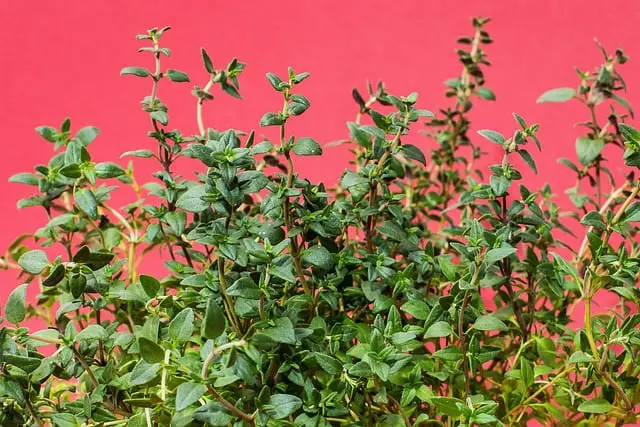
Time brings a whole bunch of really nice benefits into your garden, especially when you are using it as a companion plant alongside your lemongrass.
For one thing, time itself is a great deterrent against cabbage worms, hornworms, earworms, whiteflies, and a whole bunch of other “bad nasties” that can quickly devastate a garden – sometimes almost overnight.
Secondly, time is fantastically drought tolerant and that means it’s not going to pull a ton of moisture from your lemongrass even when it’s been planted in the exact same soil.
Third, time works to fill in the gaps between your lemongrass plants. This chokes out the potential for weeds to take over (weeds that would have robbed your lemongrass of essential nutrients) while giving you a ton of herbs to work with when you harvest your time!
Closing Thoughts
At first blush, figuring out a companion planting set up in your garden can feel like an uphill battle.
Armed with the inside information we highlighted above, though, you can choose any of our favorite top 10 lemongrass companion plants and get fantastic results almost on autopilot.
Don’t forget, either, that these companion plants can sort of be mixed and matched with one another as well. You can pick three or four (or all 10) of these companion plants to put near your lemongrass and reap all the rewards they have to offer!
Frequently asked questions
How hard is lemongrass to grow?
As long as you can protect your lemongrass from cold weather (sometimes that means starting it in the spring before the frost and harvesting before the middle of fall) this is pretty much a “set it and forget it” kind of plant to grow.
Will lemongrass come back year after year on its own?
In warmer climates (like Zone 8B and 9) you’ll find that lemongrass will pop up year after year pretty much on autopilot. In colder climates, though, you’ll probably have to replant lemongrass crops annually.
Do I need to keep my pets away from lemongrass?
It’s a good idea to make sure that your lemongrass (and companion plants, for that matter) are kept in a spot in your garden that your dogs will have a tough time getting two.
There are toxic qualities and oils in this plant that can harm your dog when eaten in extremely large quantities – though a mouthful or two of lemongrass usually won’t do much harm outside of an upset stomach.

Hey, I’m Lisa and I’ve been an avid gardener for over 30 years. I love writing, talking and living in the garden! Feel free to connect with me on my socials below

